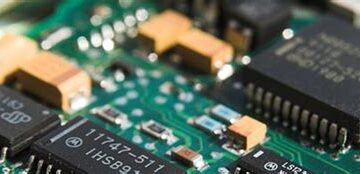Semiconductor Equipment Sales Forecast
According to recent industry reports, the global semiconductor equipment market is expected to experience a compound annual growth rate (CAGR) of approximately 8% between 2020 and 2024. This impressive growth will see the market value rise from an estimated $433.5 billion in 2020 to over $500 billion by 2024.
| Year | Projected Sales (in billions) |
|---|---|
| 2020 | $433.5 |
| 2021 | $468.2 |
| 2022 | $485.7 |
| 2023 | $503.8 |
| 2024 | $522.6 |
Source: Industry Reports
The semiconductor equipment market encompasses a wide range of tools and machinery used in the production of semiconductor devices, including wafer processing equipment, assembly and packaging equipment, and test equipment. As the demand for advanced semiconductor devices continues to grow, so too does the need for sophisticated manufacturing equipment.
Factors Driving Semiconductor Equipment Sales Growth
Increasing Demand for Advanced Technologies
One of the primary drivers behind the projected growth in semiconductor equipment sales is the increasing demand for advanced technologies across various industries. From smartphones and computers to automotive electronics and industrial automation systems, semiconductor devices play a crucial role in powering the digital world.
As consumers and businesses alike seek out more powerful, efficient, and feature-rich devices, semiconductor manufacturers are under pressure to develop ever-more advanced chips. This, in turn, necessitates investment in cutting-edge manufacturing equipment capable of producing these complex devices.
5G Network Proliferation
The ongoing rollout of 5G networks worldwide is another significant factor contributing to the growth of the semiconductor equipment market. 5G technology promises to deliver faster speeds, lower latency, and enhanced connectivity compared to previous generations of wireless networks.
To support the deployment of 5G infrastructure and devices, semiconductor manufacturers must produce a new generation of chips designed specifically for 5G applications. This includes high-frequency RF components, advanced antenna modules, and high-performance processors capable of handling the increased data throughput and computational demands of 5G networks.
As telecom operators and device manufacturers ramp up their 5G efforts, the demand for 5G-compatible semiconductor devices is expected to skyrocket, driving increased investment in semiconductor manufacturing equipment.
AI and IoT Adoption
The growing adoption of artificial intelligence (AI) and the Internet of Things (IoT) is also contributing to the expansion of the semiconductor equipment market. AI and IoT technologies rely heavily on advanced semiconductor devices to process vast amounts of data and enable intelligent decision-making.
From smart home devices and wearables to industrial sensors and autonomous vehicles, the number of connected devices is expected to grow exponentially in the coming years. This proliferation of IoT devices will require a massive increase in semiconductor production capacity, fueling demand for advanced manufacturing equipment.
Similarly, the development and deployment of AI systems across various industries will necessitate the production of specialized AI chips, such as graphics processing units (GPUs), field-programmable gate arrays (FPGAs), and application-specific integrated circuits (ASICs). As businesses invest in AI to gain a competitive edge, semiconductor manufacturers will need to expand their production capabilities to meet this growing demand.
Key Players in the Semiconductor Equipment Market
The semiconductor equipment market is dominated by a handful of key players, each offering a range of advanced manufacturing tools and solutions. Some of the most prominent companies in the industry include:
- Applied Materials
- ASML Holding
- KLA Corporation
- Lam Research
- Tokyo Electron
These industry leaders are at the forefront of innovation in the semiconductor equipment space, continually developing new technologies to enable the production of cutting-edge semiconductor devices. As the market continues to grow, these companies are well-positioned to capitalize on the increasing demand for advanced manufacturing equipment.
Market Share of Key Players
| Company | Market Share |
|---|---|
| Applied Materials | 19.2% |
| ASML Holding | 17.5% |
| KLA Corporation | 9.7% |
| Lam Research | 9.3% |
| Tokyo Electron | 8.9% |
Source: Industry Reports

Challenges and Opportunities
While the semiconductor equipment market is poised for significant growth in the coming years, it is not without its challenges. One of the primary issues facing the industry is the increasing complexity and cost of developing advanced manufacturing equipment.
As semiconductor devices become more sophisticated, the tools required to produce them must also evolve. This necessitates substantial investment in research and development, as well as the acquisition of specialized expertise. For smaller players in the market, keeping pace with the rapid technological advancements can be a daunting task.
Another challenge facing the semiconductor equipment industry is the potential for supply chain disruptions. The production of semiconductor devices relies on a complex global supply chain, with components and materials sourced from various countries. Geopolitical tensions, trade disputes, and unforeseen events like the COVID-19 pandemic can all disrupt this delicate balance, leading to shortages and production delays.
Despite these challenges, the semiconductor equipment market also presents significant opportunities for growth and innovation. As the demand for advanced semiconductor devices continues to rise, equipment manufacturers that can develop cutting-edge solutions will be well-positioned to capture a larger share of the market.
Additionally, the growth of emerging technologies like 5G, AI, and IoT is creating new markets for semiconductor devices, opening up fresh revenue streams for equipment manufacturers. By aligning their product offerings with these trends, companies can tap into the expanding demand for specialized manufacturing equipment.
FAQ
-
What is the projected growth rate for the global semiconductor equipment market?
The global semiconductor equipment market is expected to grow at a CAGR of approximately 8% between 2020 and 2024. -
What are some of the key factors driving the growth of the semiconductor equipment market?
The growth of the semiconductor equipment market is being driven by factors such as the increasing demand for advanced technologies, the proliferation of 5G networks, and the growing adoption of AI and IoT. -
Who are the key players in the semiconductor equipment market?
Some of the key players in the semiconductor equipment market include Applied Materials, ASML Holding, KLA Corporation, Lam Research, and Tokyo Electron. -
What are some of the challenges facing the semiconductor equipment industry?
The semiconductor equipment industry faces challenges such as the increasing complexity and cost of developing advanced manufacturing equipment and the potential for supply chain disruptions due to geopolitical tensions and unforeseen events. -
What opportunities exist for growth and innovation in the semiconductor equipment market?
Opportunities for growth and innovation in the semiconductor equipment market include the development of cutting-edge solutions to meet the demand for advanced semiconductor devices and the alignment of product offerings with emerging technologies like 5G, AI, and IoT.
Conclusion
The global semiconductor equipment market is set for a period of robust growth, with sales projected to surpass $500 billion by 2024. This expansion is being driven by the increasing demand for advanced technologies, the rollout of 5G networks, and the growing adoption of AI and IoT.
As semiconductor devices become more sophisticated and ubiquitous, the need for advanced manufacturing equipment will continue to rise. This presents significant opportunities for equipment manufacturers to innovate and capture a larger share of the market.
However, the industry also faces challenges, such as the increasing complexity and cost of developing cutting-edge manufacturing solutions and the potential for supply chain disruptions. To succeed in this dynamic market, companies must be agile, innovative, and well-positioned to capitalize on the emerging trends shaping the future of the semiconductor industry.
By investing in research and development, forging strategic partnerships, and aligning their product offerings with the needs of the market, semiconductor equipment manufacturers can navigate these challenges and unlock the vast potential of this growing industry. As the world becomes increasingly digitized, the importance of advanced semiconductor devices – and the equipment used to produce them – will only continue to grow.



0 Comments